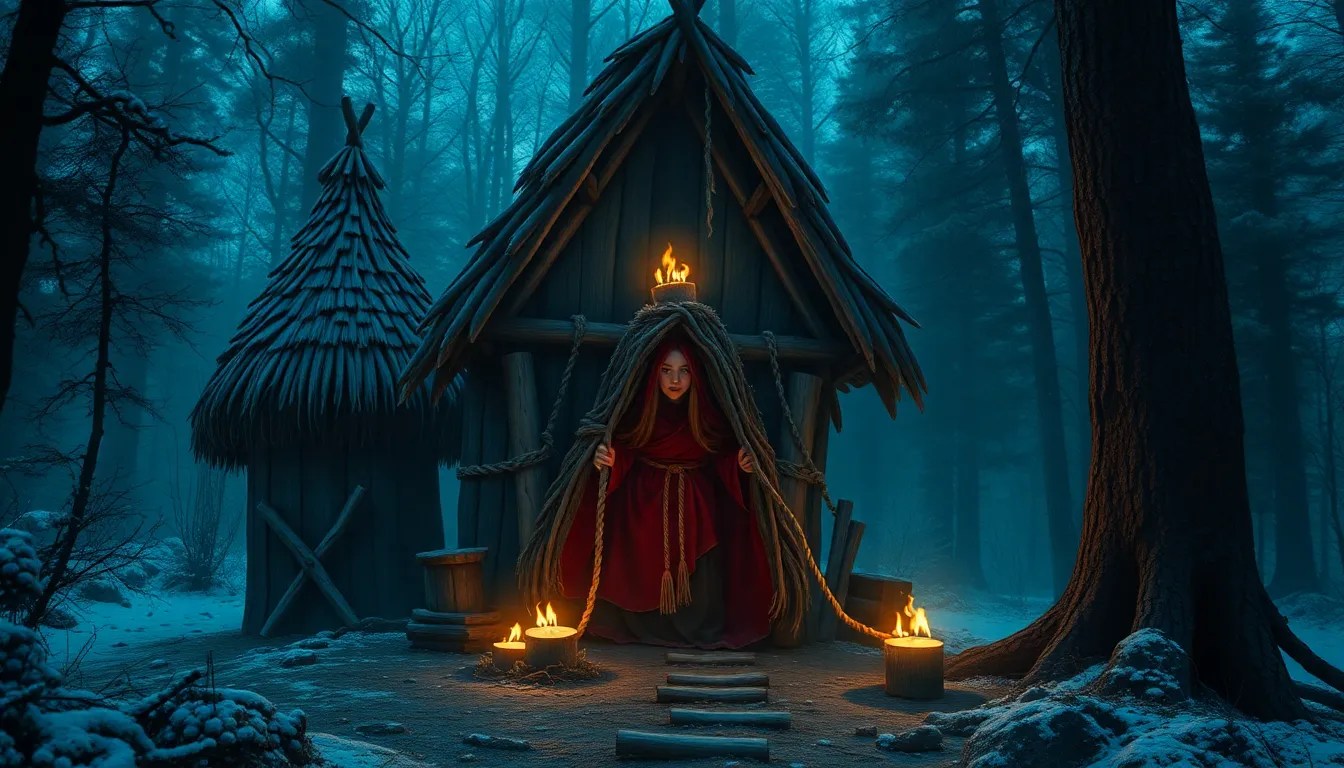Baba Yaga and the Three Sisters: A Tale of Transformation
I. Introduction to Baba Yaga
Baba Yaga is one of the most enigmatic figures in Slavic folklore, often depicted as a witch or crone who dwells deep in the forest. She is characterized by her distinctive appearance, often portrayed with a long, bony nose and iron teeth. Baba Yaga’s significance in Slavic culture transcends mere superstition; she embodies the complexities of nature, the duality of femininity, and the transformative power of fear and respect.
Transformation is a recurring theme in mythology, representing personal growth, change, and the journey from innocence to wisdom. In many tales, characters undergo significant metamorphoses, often catalyzed by their encounters with supernatural beings. This article aims to explore the tale of Baba Yaga and the three sisters, highlighting the transformative journeys they embark upon and the lessons they learn along the way.
II. The Origins of Baba Yaga
The origins of Baba Yaga can be traced back to ancient Slavic beliefs and practices. Over time, her character has evolved, absorbing various cultural influences and interpretations. In early mythology, she was associated with the forces of nature and the cycles of life and death.
Key characteristics of Baba Yaga include:
- A fierce and unpredictable nature
- A deep connection to the forest and its spirits
- Her role as both a helper and a hindrance to those who seek her out
In Slavic folklore, Baba Yaga serves as a guardian of wisdom and a symbol of the unknown. She challenges heroes and heroines, often requiring them to confront their fears and desires, making her a crucial figure in the narratives that shape Slavic cultural identity.
III. The Tale of the Three Sisters
The tale of the three sisters revolves around their unique backgrounds and personalities. Each sister embodies different traits:
- Olga: The eldest, wise and practical, often taking the lead.
- Anya: The middle sister, curious and adventurous, driven by a desire to explore the world.
- Kira: The youngest, gentle and compassionate, often seen as the heart of the family.
Faced with various challenges in their lives, the sisters hear tales of Baba Yaga’s power and wisdom. Motivated by a desire to transform their circumstances and seek answers, they embark on a journey to find Baba Yaga’s dwelling deep in the forest.
IV. Encounters with Baba Yaga
The sisters’ first encounter with Baba Yaga is marked by both fear and awe. Her home, a peculiar hut that stands on chicken legs, embodies the wildness of nature and the unknown. As they approach, they are struck by the eerie atmosphere that surrounds it.
Baba Yaga sets forth a series of trials for the sisters, testing their resolve, ingenuity, and bravery. Each trial is steeped in symbolism, reflecting the journey of self-discovery:
- A test of strength and endurance
- A challenge of cleverness and wit
- A quest for compassion and understanding
The interactions between the sisters and Baba Yaga highlight themes of fear, respect, and cunning. The sisters must learn to navigate Baba Yaga’s unpredictable nature while respecting her power and wisdom.
V. Transformation through Trials
The trials set by Baba Yaga serve as catalysts for transformation. Each sister undergoes a unique journey that fosters personal growth:
- Olga learns to balance her practicality with intuition, embracing the unknown.
- Anya discovers the importance of caution and the value of knowledge over mere adventure.
- Kira realizes that compassion can be a source of strength, allowing her to forge connections with others.
The symbolic meanings behind these transformations resonate deeply within the narrative, illustrating the importance of facing challenges to unlock one’s true potential.
VI. The Role of Magic and Nature
Magic plays a crucial role in the tale, infusing the narrative with a sense of wonder and mystery. The sisters’ transformations are intimately connected to the natural world, reflecting the belief that nature is both nurturing and fearsome.
Baba Yaga embodies the duality of nature, acting as a guardian of its mysteries. Her interactions with the sisters reveal the importance of respecting nature and understanding its rhythms. The sisters’ journey through the forest symbolizes their journey through life, with its challenges and transformations.
VII. Lessons Learned and Conclusion
The tale of Baba Yaga and the three sisters conveys several moral lessons:
- The value of courage in the face of fear
- The importance of wisdom and understanding in personal growth
- The power of compassion and connection with others
Baba Yaga’s legacy in Slavic culture endures, symbolizing the complexities of life and the transformative power of facing one’s fears. The broader themes of transformation in mythology resonate across cultures, reminding us of the universal journey of growth and self-discovery.
VIII. Further Exploration of Slavic Mythology
For readers interested in delving deeper into Slavic folklore, several resources and related tales are recommended:
- “The Firebird and Other Russian Fairy Tales” – A collection of enchanting stories.
- “Russian Fairy Tales: A Choice Collection from the Russian Language” – A compilation of classic tales.
- “Baba Yaga: The Wild Witch of the East” – An exploration of her character and significance.
We invite readers to share their interpretations and personal experiences with Slavic mythology. Each tale offers unique insights into the human experience, and the stories of Baba Yaga and the three sisters serve as a profound reminder of the power of transformation.



